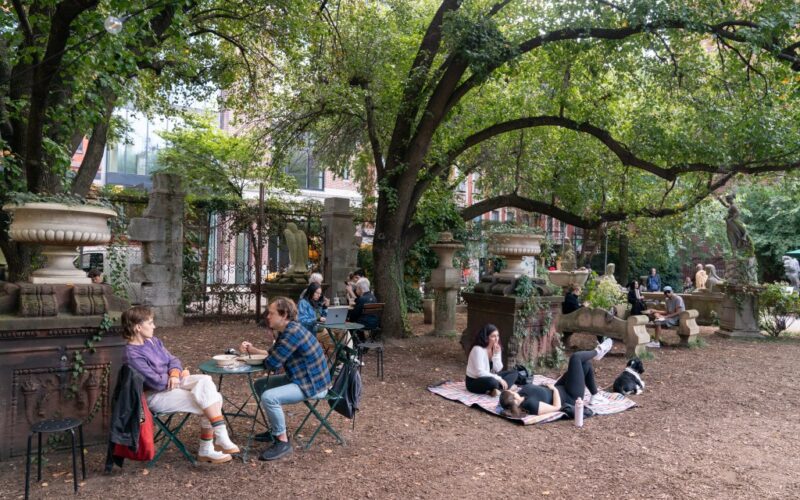The battle over Elizabeth Street Garden has raged on for more than a decade. Neighbors consider the garden to be a local treasure. Housing advocates see it as a prime spot for building affordable homes.
To bring this seemingly intractable fight to an end would require a solution that serves both sides’ interests, producing the affordable housing our city needs and saving this open space neighbors love. Now, Mayor Adams has done just that.
The Adams administration has delivered a resolution that preserves this beloved garden in an area largely missing parkland, while, at the same time, creating more than five times the amount of affordable housing in this district than was originally contemplated from the garden site alone.
This is how government should work: bringing people together to find solutions that work for everyone.
Here’s how it happened: When the mayor announced my appointment as first deputy mayor earlier this spring, City Councilmember Christopher Marte reached out about the future of the garden. Marte was among the many in this downtown neighborhood who have been passionate about saving it. But housing advocates have been just as passionate about wanting to see more affordable housing in this area, particularly for seniors.
Marte had voted against the Adams administration’s landmark “City of Yes” legislation in December that rezoned the entire city to create more than 80,000 new units of affordable housing.
We told him that if he intended to convince us to keep the garden, he would have to agree to rezonings in his district that create hundreds more affordable units than the 123 slated for the garden site. Since the New York City Council defers to local councilmembers on rezonings in their districts, his support was crucial because without Marte’s support, we could not rezone specific sites in his district to create more affordable housing.
Working together over the past two months, however, we have achieved a remarkable result. In exchange for preserving the garden, Marte has agreed to three site-specific rezonings authorizing hundreds more units of affordable housing than could otherwise have been built without rezonings.
Under this agreement, Marte has agreed to rezone a lot on Bowery, one block away from the garden, to add 123 new affordable homes for seniors, ensuring we build the same amount of senior affordable housing that was slated to be built on the garden site. Marte has also agreed to rezone another nearby site at 22 Suffolk St. to create a 200-unit development of all affordable housing.
And after initially opposing it, Marte has now agreed to support an Adams administration priority to rezone 100 Gold St. to create 1,000 new homes, at least 300 of which will be affordable housing.
Once these three sites are rezoned, they will produce more than 620 affordable housing units that could not otherwise have been built there. In other words, through this constructive partnership, we will create more than five times the affordable housing than initially contemplated from the garden site alone.
Elizabeth Street Garden will remain a community garden, stay open to the public more hours each day than ever before, and potentially become a city park if we so choose. That is a win-win for everybody.
So why did some affordable housing advocates, including former city officials Carl Weisbrod and Alicia Glen, criticize this possibility last month before any agreement was reached? They see the garden as a symbol to fight over; but we see it as an opportunity to leverage building more affordable housing than others thought possible.
We are proud to be the most pro-housing administration in city history. Mayor Adams has created more affordable housing than any of his predecessors. Through rezonings, the mayor has created more than 130,000 new affordable homes. That’s more housing created in less than three-and-a-half years than Mayors Bill de Blasio and Mike Bloomberg created over two decades.
What we have done here has advanced affordable housing by an order of magnitude more than if we had just followed what those administrations planned to do with this site. We did this by thinking outside-the-box to create even more affordable housing.
To be truly effective in government, you have to have a head and a heart. You have to listen to communities. You have to serve the public. That’s why it’s called public service. You have to bring parties together to achieve even better outcomes. It takes an open mind and an open heart. And that’s what Adams and this administration have in abundance.
Mastro is the first deputy mayor of New York City.








